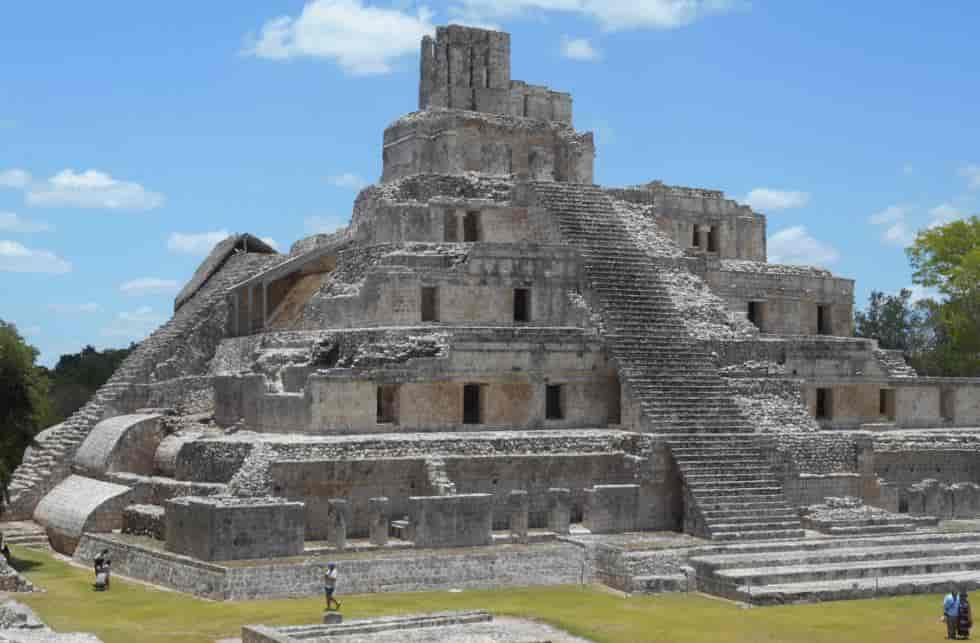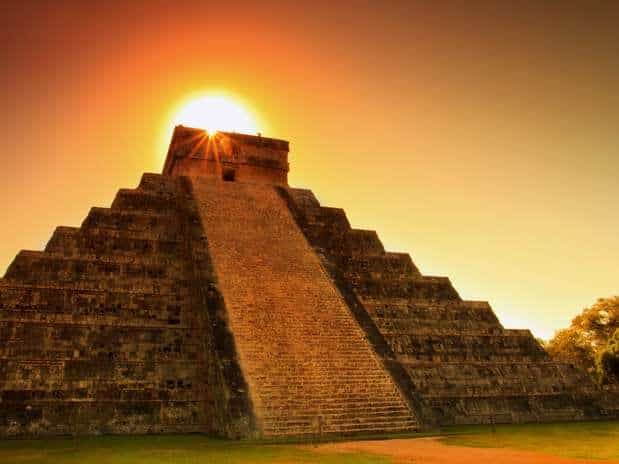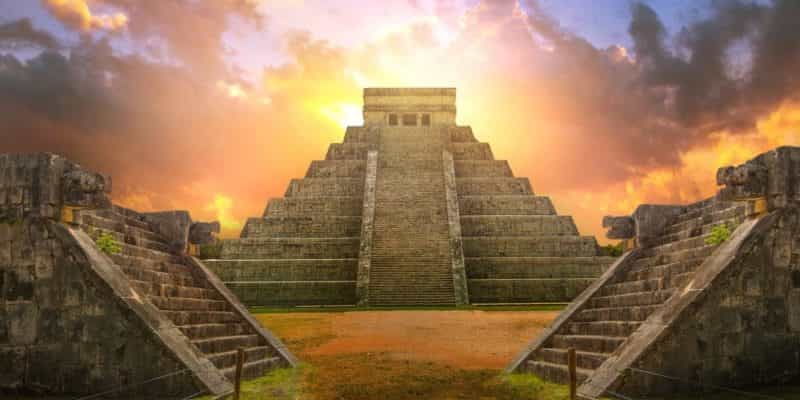What is the Mayan culture?
The group of pre-Columbian peoples who ruled Mesoamerica for 18 centuries is known as the Mayan culture or Mayan civilization, from the Pre-Classic Period (2000 BC – 250 AD) of the continent, until the Post-Classic Period (900-1527 AD). .), when the Conquest of America took place.
It was one of the most outstanding civilizations in all of original America. They left behind an important set of ruins and a cultural legacy that inspired later cultures, part of which still survives.
The Mayans are celebrated for different aspects of their advanced culture. For example, they invented the only complete writing system in pre-Columbian America, and developed their own knowledge of art, architecture, mathematics, astronomy, and ecology. Among other things, they are credited with inventing zero.
For all these reasons, during their heyday they were the dominant culture of the entire region.
They controlled much of the Mesoamerican territory and maintained dynamic relations of exchange with other neighboring cultures, such as the Olmecs or the Mixtecs.
Where did the Mayan culture develop?
The Mayans were a Mesoamerican people, that is, they flourished in the Mesoamerican cultural area, one of the six cradles of human civilization on our planet. This region extends from the current center of Mexico to Central America.
The Mayans came to encompass southeastern Mexico, all of Yucatan, Guatemala, and Belize, the western region of the current territories of El Salvador and Honduras.
They knew the Gulf of Mexico, the Caribbean Coast and the Pacific Ocean. In other words, they controlled approximately a third of the total area of Mesoamerica.
When did the Mayan culture develop?
Mayan culture history
The history of the Mayan culture lasts for almost 3500 years. Its first towns arose almost 4,000 years ago, and its disappearance as an independent culture occurs due to its encounter with the European conquerors.
All this is usually organized into three major periods, which are:
Preclassic period (2000 BC to 250 AD). The first vestiges of the Mayan people and their first settlements occur along the strip of the Pacific and then the Atlantic.
Slowly these become the first major cities in the region: Nakbé, Tikal, Dzibilchaltún, Xicalango, among others. This period is divided into three subperiods:
Early Preclassic (2,000-1,000 BC), Middle Preclassic (1,000-350 BC), and Late Preclassic (350 BC-250 AD); in this last one the first cultural flourishing of the Mayans took place, and towards the 1st century AD., its first collapse.
Many of its great cities were then abandoned, for reasons unknown until today.
Classic Period (250-900 AD). In this period there is a revival of Mayan culture, comparable only to that experienced by Europe after the Middle Ages, or perhaps to the flourishing of ancient Greece.
In this sense, great ceremonial centers such as Chichen-Itzá and Uxmal emerged. It is also a period of great and bloody wars, which allowed the rise and fall of various monarchical systems.
Eventually, this led to a new and great political collapse, the abandonment of cities in favor of the northern regions of Mexico, and an impoverishment that even today is difficult to explain.
This period, in turn, contains three sub-periods: Early Classic (AD 250-550), Late Classic (AD 550-830), and Terminal Classic (AD 830-950).
Postclassic Period (950 to 1539 AD). Significant vestiges of the anciently vast Mayan culture persisted after the fall in cities located in elevated territories, or near water sources, with an organization that recognized different Mayan states governed by a council of kings.
That was until the arrival of the Spanish invaders, because being so weakened by their internal struggles, the Mayan peoples could not face the conquest and were colonized by European culture.
What are the characteristics of the Mayan culture?
Like many other human civilizations, the Mayan was established from the abandonment of nomadism and the development of agriculture, the products of which formed the foundation of the Mayan diet for centuries: corn, beans, squash and chili.
Its first cities arose around the year 750, and towards 500 BC had already reached monumental architectural proportions, especially in its great temples and ceremonial centers.
During its flourishing, its city-states spanned huge areas of influence and connected to each other through complex trade networks .
Its artistic forms were sophisticated and left lasting traces, in which jade, wood, obsidian, ceramics and carved stone were used abundantly.
The Mayans spoke a diverse language, derived from the ancient protomaya in a set of Mayan languages, each one different depending on the kingdom in which it was spoken.
Thus, there was a Huastecan, Quichean, Mamean language, etc. Most of the Mayan texts, however, from the classical period, were written in classical Choltí.
Among the main characteristics that define the Mayan culture we can highlight the following:
- They were one of the most important civilizations in America and influenced the emergence and customs of new cultures.
- They were found in the central zone of America, precisely in the Yucatan peninsula and its surroundings.
- They were polytheists , that is, they believed in various gods and related them to nature.
- Their economy was based on agriculture, which was carried out by peasants on the outskirts of city-states.
- They developed great knowledge of mathematics, astrology, and writing.
- They built great pyramids as social centers and temples of veneration for their gods.
Mayan religion
The Mayan religion shared traits with much of the rest of Mesoamerica. They believed in a spiritual plane inhabited by powerful deities. Their gods were to be appeased through ritual practices, human sacrifice, and ceremonial offerings.
Before them, the deceased ancestors themselves and the shamans served as intermediaries. That is why the Mayans buried their dead under the floors of their houses , in the middle of the corresponding offerings, according to their social status.
The Mayan worldview was highly elaborated: it contemplated 13 levels in the sky and nine in the underworld, and between the two was the world of the living.
In turn, each level consisted of four cardinal points, each associated with a distinctive color, and to which certain aspects of the main deities of its pantheon were associated.
Otherwise, the religion was in the hands of the priests, a closed group whose members came from the elite of society.
During the Classic Period, the high priest and leader of society , who also served as ruler, began to emerge among them.
The main Mayan gods were the following:
- Hunab ku: Main God, creator of all.
- Itzamná: God of wisdom.
- Ixchel: Goddess of fertility and water.
- Yum Kaax: God of agriculture.
- Kauil: God of fire and medicine.
- Kukulkan: God of water and wind.
Mayan economy
Although the Mayan livelihood base was agricultural, commerce played a fundamental role in their civilization, and in their contact with the other towns around it.
The largest and most important cities controlled access to key resources , such as obsidian mines, sources of salt, and even the slave trade in the Mesoamerican region .
In fact, the Mayas of Tabasco built an extensive network of fluvial exchange, which made them the greatest merchants of their region and their period.
Items of typical Mayan invoice could be found in distant cities of Nicaragua and Honduras, so they were transported and marketed in some way.
This activity was so fundamental to the Mayan economy that even after the conquest it continued to be carried out marginally.
Social and political organization of the Mayan culture
Mayan society was divided, in its beginnings, between a dominant elite and a mass of commoners. This order was sustained by military force and religious tradition. But the sustained growth of the Mayan states led to the appearance of more complex economic and political classes.
Therefore, Mayan society subsequently contained low-ranking priests, soldiers, artisans, officials, peasantry and serfdom, or captured slaves from other neighboring cultures.
The Mayan social organization was hierarchically divided as follows:
- Priests : members of the religious class who were granted supreme power, as they were believed capable of communicating with the gods.
- Rulers : families charged with governing the city-states. They dressed in a particular and ostentatious way that set them apart from the rest.
- Nobility : warrior chiefs, high officials, chiefs and some merchants.
- Artisans and peasants : these used to live on the outskirts of the city in low economic conditions and, in some cases, were considered slaves.
- Slaves : lower members of Mayan society, who forced work for the nobility and the State.
Unlike the Aztecs or the Incas, the Mayans did not form a central political system, that is, a single state or kingdom.
Instead, they preferred the coexistence of diverse states and chiefdoms, which eventually reached temporary regional dominance.
However, their governments always consisted of variants of the theocratic monarchy, that is, of a king imposed by divine will, chosen from a political elite. Therefore, intrigues and alliances between castes were a frequent and controversial issue.
Furthermore, the Maya were assiduous warriors and faced numerous political and military conflicts throughout their history. Partly because the different Mayan kingdoms competed with each other for regional predominance.
On the other hand, the war culture was central to the Mayan conception of the world: humiliation or physical sacrifice of defeated warriors were common practices, as well as rewarding victorious warriors with parts of the body of the fallen.
Their favorite weapons were always blowguns, obsidian swords and especially the atlatl, a kind of long spear.
Mayan clothing
The Mayan clothing was simple, with a predominance of cotton and long fabrics , such as skirts, for women.
For their part, the men wore a type of underpants called “pati”, which left their torso exposed.
The nobility adorned their outfits with stone embroidery and ornate feathers. In addition, they wore headdresses, belts and other luxurious accessories that served to differentiate them from the lower social classes.

Architecture in the Mayan culture
The Mayans left behind an important architectural work, one of the largest in the premodern world. They built palaces, pyramid temples, ceremonial and sports spaces. In addition, they developed expressly aligned structures for astronomical observation.
However, in their cities there was no formal urban design. In fact, the populations grew irregularly, from the outside to the Interior. In the center of the cities were the administrative and ceremonial buildings , surrounded by residential buildings.
Their buildings used Neolithic technology, with stone and other materials. Through masonry techniques they could take advantage of the elements available around.
Writing in the Mayan culture
The Mayan writing was a complete system of hieroglyphic writing , the only one in all of pre-Columbian America, whose first indications are estimated between the 1st and 2nd centuries AD. C. , in the coastal region of present-day Guatemala.
It is very similar to Mesoamerican isthmic writing (consisting of logograms), so it is possible that they arose in parallel. The Mayans used this letter to label vessels, murals, and stelae, for both practical, ritual, and religious purposes.
Astronomy in the Mayan culture
Another important Mayan legacy has to do with their meticulousness in looking at the sky and recording their astronomical observations around the Sun, Moon, Venus, and stars.
According to their belief, divinatory tools could be obtained from the sky. That is to say, the priests contemplated the past astronomical cycles and linked them with events that could be repeated, thus formulating prophecies.
Although they did not have a clear scientific intention, the Mayans managed to measure the Venus cycle of 584 days with a margin of error of just two hours, since they also had a powerful grasp of mathematics.
End of the Mayan culture
One of the theories establishes that due to the great demographic growth and the increasing food needs , natural resources were depleted and, added to long periods of drought , the Mayan civilization was weakening.
On the other hand, a different theory proposes that the invading tribes from the north were weakening the Mayans, and that the Spanish cultures, with the conquest of America , were the ones that ended up destroying the Mayan culture, which was already in decline.






